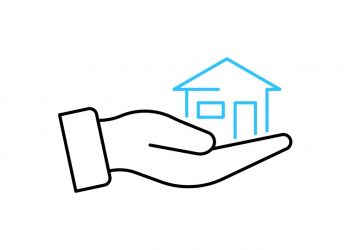During the COVID-19 pandemic, many older adults faced social isolation and disruptions in access to food, medical care and supportive services. In response, organizations that support older people improvised solutions to address these challenges. A new report from the Harvard Joint Center for Housing Studies (JCHS) and The Hastings Center examines how these responses, most of which were intended to be temporary, might improve housing and support for older adults, and address longstanding inequities.
In the report, “Advancing Housing and Health Equity for Older Adults: Pandemic Innovations and Policy Ideas,” authors Jennifer Molinsky (JCHS), Nancy Berlinger (Hastings) and Bailey Hu (JCHS) employed a housing lens to examine the importance of home and neighborhood to older adult health and wellbeing. The report draws from more than 200 examples of housing-focused pandemic responses nationwide, informed by a diverse network of policymakers, practitioners, advocates and researchers, and provides a comprehensive set of observations and recommendations for the future.
A webinar was hosted to release the report, consisting of a panel discussion that featured Berlinger as well as Robin Lipson, deputy secretary, Massachusetts Executive Office of Elder Affairs; Lauren Taylor, assistant professor, Department of Population Health, NYU Grossman School of Medicine, Affiliated Faculty, NYU Wagner; and Tam Perry, associate professor, School of Social Work, Wayne State University.
Key report highlights:
- Age-friendly networks played a critical role in information sharing, advocacy and the delivery of goods and services during the pandemic. Funders, including government agencies and foundations, can play a larger role in nurturing the development of interorganizational networks and partnerships, especially ones that include local organizations trusted by older adults.
- Collaboration with older adults was essential in devising pandemic responses. Engaging older adults, people with disabilities and caregivers in planning processes helps ensure that plans meaningfully include the full population.
- Flexibility in regulations and funding enabled many pandemic responses. Going forward, some of these responses might be made permanent, or flexibility could be built in to ensure innovation in non-emergency times.
- Services delivered to the home were particularly valuable during the pandemic, especially during periods of sheltering at home, and service coordinators played particularly important roles in publicly assisted housing. Adequate funding is needed to expand these services to more older adults.
- During the pandemic, the physical design, safety and infrastructure of homes and neighborhoods mattered more than ever. Architects, developers, planners and building managers should work to ensure that everyone has access to fresh air, broadband, and accessible homes and neighborhoods.
- Some pandemic responses succeeded despite barriers to coordination and collaboration. Strengthening the connections between housing, healthcare and social service programs requires coordinating subsidies and incentives, sharing data and establishing forums for collaboration.
Webinar panelist commentaries:
Robin Lipson commented:
“It always made sense to me before the pandemic that we needed a tighter link…Let’s just take a senior housing building: you might have 200 older adults living there, they might among them have dozens and dozens of different healthy plans and people, even if they have a case manager or someone who’s working with them, there might be dozens of organizations in that building, and they don’t talk to each other.
“That was a challenge before the pandemic and something that we wanted to work on, because we know the value of site-based services. And then the pandemic came…and that value went through the roof right, the ability to deploy services at a site level, to share information at a site level,” concluded Lipson.
Lauren Taylor said:
“It certainly recenters the conversations, I think, and in a really helpful way. And so that’s a very helpful intervention on the conversation. I was sitting down this morning thinking, in what ways do I think we’re still going to struggle to make the case about the value of housing for older Americans…It’s in trying to figure out how to measure the value.
“I say that because standard ways of measuring value where I come from, you know I sit in a medical school all day, are generally you get more life years out of something, you get more working productivity, right? When you’re starting with a population who is older and potentially frailer living with some chronic illnesses, achieving any of those 3 is tough, and so I think we not only need to center housing and appreciate the kind of complexity of housing, which I think the report and your work generally does really effectively, but we also need to just think differently about the value proposition,” concluded Taylor.
Major takeaway:
A more equitable future for older adults requires disrupting a narrative around aging that largely centers the healthcare system in policy discussions, as stated by the authors of the report. “The housing lens we developed through this study is a new tool for policy analysis and development,” said Berlinger. “It reflects the ethical and social importance of housing to safety, health and wellbeing, and focuses our attention on the moral imperative to balance private-sector options available only to the wealthy minority of older adults with far greater attention to housing equity in late life.”
“The housing lens helped highlight that where people live affects their quality of life, access to services, and ability to afford their home and the supportive services they need to remain in that home,” said Molinsky. “It helped shine a light on the complexities and inequities people face when they seek to age in place, which were brought into sharp relief by the pandemic.”
For the full report, visit www.jchs.harvard.edu/covid-19-recapp-report. The webinar can be viewed here.












